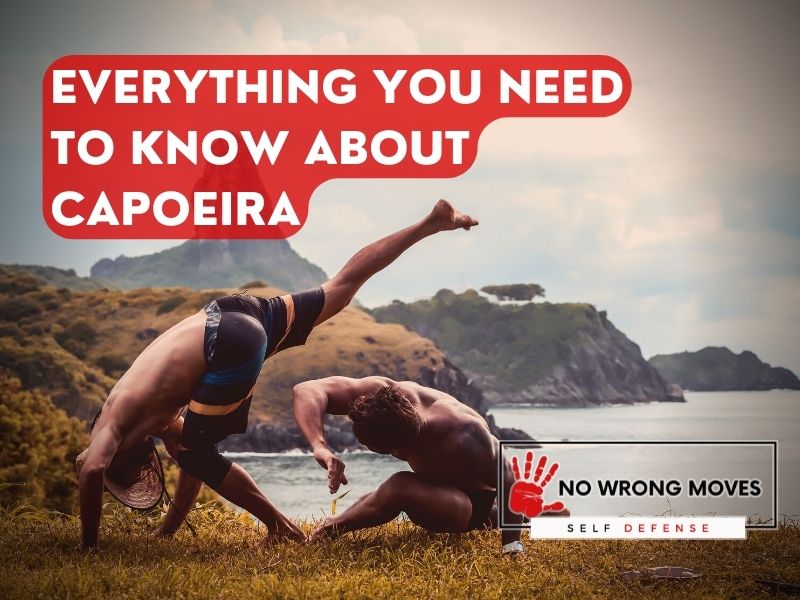
Interested in discovering a fascinating martial art? Passionate about learning dance, acrobatics, and music? Great, because we've got something that combines the best of both worlds: Capoeira.
In this post, I'll be providing you with a comprehensive overview of what Capoeira is, its origins, the numerous benefits of practicing it, and how you can get started.
And on top of all that, I'll explain what to expect from your first Capoeira class, the different levels and ranks in Capoeira, and why it's so essential for you to find a skilled Capoeira teacher or class. So, ready to dive into the world of Capoeira? Let's begin!
What is Capoeira?

Capoeira is a unique Afro-Brazilian martial art that blends dance, acrobatics, music, and spirituality. It emerged during the early 16th century as a product of cultural blending between African, Indigenous Brazilian, and Portuguese influences.
Capoeira is renowned for its dynamic, acrobatic movements, including impressive flips and kicks, that emphasize fluidity and mobility over rigid postures.
One of the core techniques in Capoeira is the ginga, a swaying back and forth movement that allows practitioners to remain in constant motion and evade attacks.
The origin of the word Capoeira is widely debated, but it's commonly believed to come from the Tupi language, where "ka'a" means "forest" and "paũ" means "round," a reference to the places where escaped slaves would hide.
Practitioners of Capoeira are called capoeiristas, and the art form is continually evolving, with new styles, techniques, and variations emerging over time.
Although Capoeira is often described as a martial art disguised as a dance, its roots go much deeper. Capoeira served not only as a form of self-defense, but also as a way to maintain spiritual connections and cultural traditions.
Following the abolition of slavery in Brazil in 1888, Capoeira was banned in 1890 as a way to suppress Afro-Brazilian culture.
But in the 1930s, Mestre Bimba created a new style of Capoeira that removed its spiritual elements and incorporated elements of jiu-jitsu, gymnastics, and sports, making it more socially acceptable.
Today, Capoeira is recognized as a valuable cultural heritage, and it was granted a protected status by UNESCO in 2014.
Where Does Capoeira Come From?
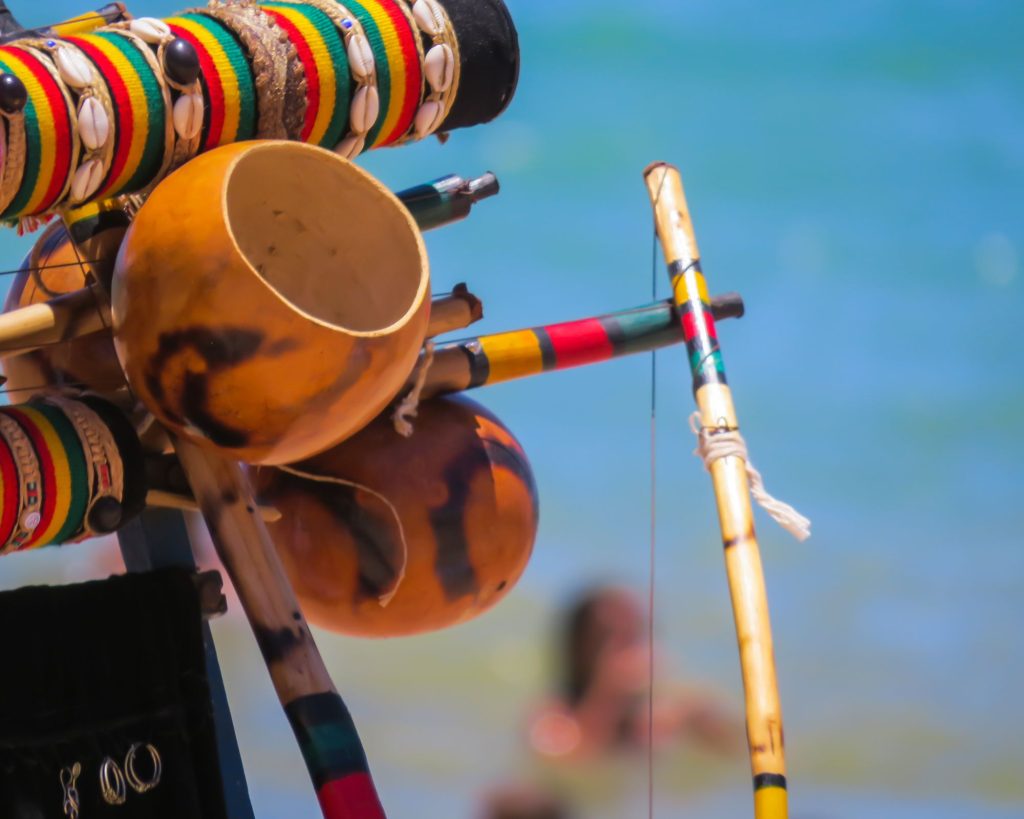
Capoeira originated in the 16th century among enslaved Africans and has since evolved into a constantly evolving art form.
The biggest quilombo (a settlement established by escaped slaves), the Quilombo dos Palmares, consisted of many villages which lasted more than a century and resisted multiple attacks from colonial troops.
Capoeira continued to be practiced underground after it was outlawed until it finally lost its criminal connotation in 1940 and was legalized.
When the Portuguese colonized Brazil, they brought with them African slaves who were forced to work on their plantations. As a way to resist oppression and preserve their culture, these slaves developed Capoeira, mostly as a means of self-defense... and even rebellion.
Capoeira was declared illegal in 1888 but experienced a resurgence in the early 1930s, when it was viewed as a socially acceptable sport. Today, it is widely practiced and appreciated around the world, with various regional styles and schools of thought.
Although Capoeira has its roots in resistance and struggle, it has evolved into a celebration of joy, community and freedom. In the game or “jogo” of Capoeira, two players engage in a fluid exchange of movement, using complex acrobatics and techniques to deceive and outmaneuver their opponent.
This is accompanied by traditional music played on instruments such as drums, tambourines, and berimbaus (a single-string bow instrument).
Benefits of Capoeira
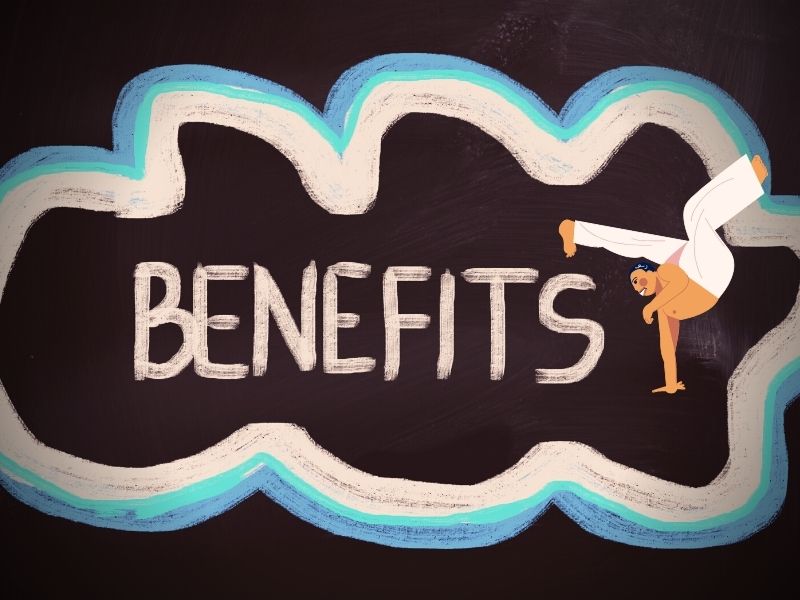
Capoeira is a dynamic and exciting martial art that offers a wide range of physical and mental benefits. It is an excellent way to improve cardiovascular health, as the high-intensity movements require a lot of endurance and stamina.
In addition, capoeira can help to increase strength and flexibility, which are essential for performing the acrobatic movements that are characteristic of the art form.
Beyond physical fitness, capoeira can also enhance coordination and balance, as practitioners must be able to move their bodies in complex and fluid ways. Capoeira can also be a practical and effective self-defense tool, as it emphasizes agility, evasion, and counter-attacks.
And last but not least, capoeira is a fun and interesting way to socialize and stay active, as it is often practiced in a group setting and encourages collaboration and camaraderie.
How to get started in Capoeira
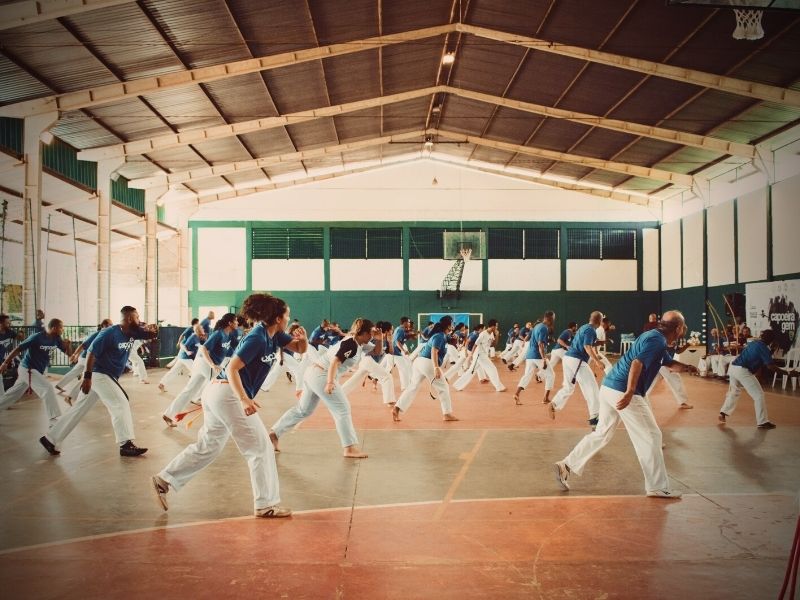
If you're just about to start your journey in Capoeira, the first step will definitely be to research different schools and find one that aligns with your goals and beliefs. Consider the school's values, teaching methods, and the experience and qualifications of the instructors.
Once you have narrowed down your options, attend a trial class to get a feel for the school's atmosphere and see if it is a good fit for you.
After selecting a Capoeira school, you will begin your training under the guidance of a qualified instructor. You will learn the basic techniques, principles, and forms of Capoeira, including kicks, acrobatics, and musical rhythms.
It's absolutely important to practice consistently to improve your technique and understanding of Capoeira principles.
To continue advancing in your Capoeira practice, challenge yourself by attending workshops and seminars, sparring with other practitioners, and seeking new opportunities for growth within the Capoeira community.
Watching and studying Capoeira masters can also provide inspiration and new insights into the art. Always approach your practice with humility and an openness to learning.
And don't forget: finding a good Capoeira teacher or class is absolutely crucial to your success in the art.
And with all of this, alongside some dedication, perseverance, and the guidance of a qualified instructor, you can develop your skills and understanding of Capoeira and become a part of a vibrant and supportive community.
Capoeira Ranks And Levels
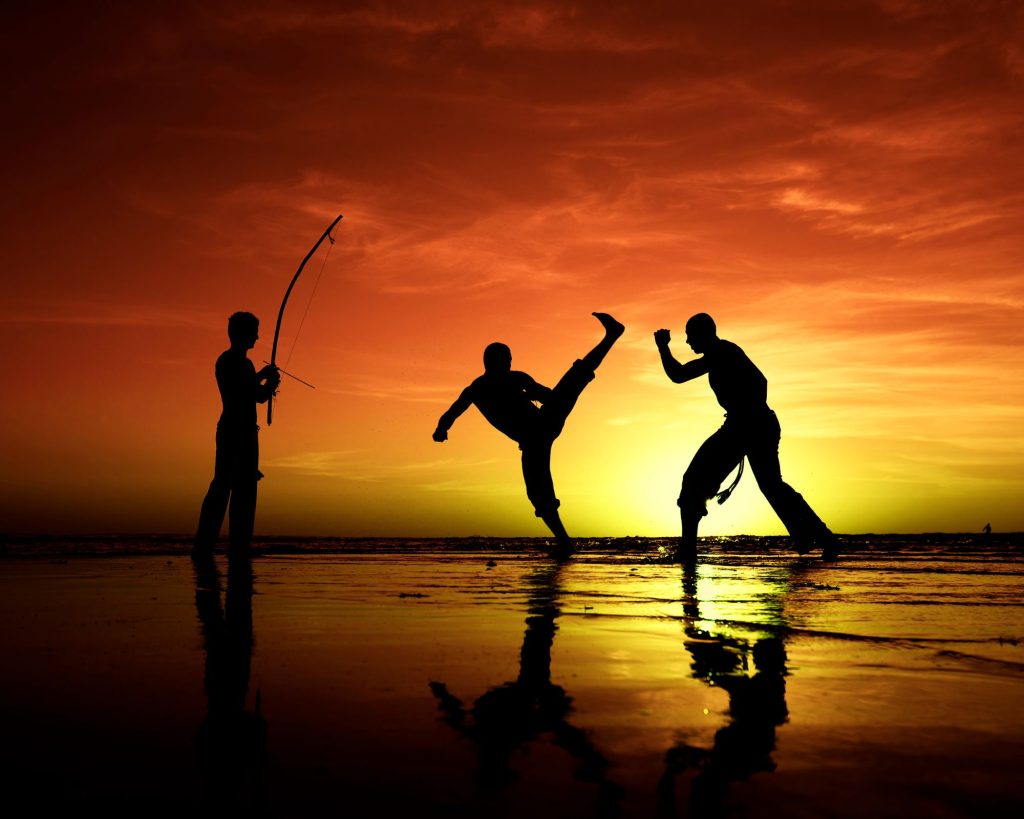
Just about what you'd reasonably expect, Capoeira is a Brazilian martial art that has many different levels and ranks.
The highest rank in Capoeira is the Mestre, which is a Portuguese word that means "master." There are only a few people in the world who have achieved the rank of Mestre in Capoeira.
Below the rank of Mestre, there are a variety of different levels and ranks in Capoeira. These ranks include Professor, Contra-Mestre, and Capoeriaista. Each rank has its own set of responsibilities and duties within the Capoeira community.
The level of a Capoeirista is determined by how well they know the art form, as well as their ability to teach and lead others. Those who can show that they are dedicated to learning and teaching Capoeira are typically promoted to a higher rank over time.
The Importance of A Good Capoeira Instructor
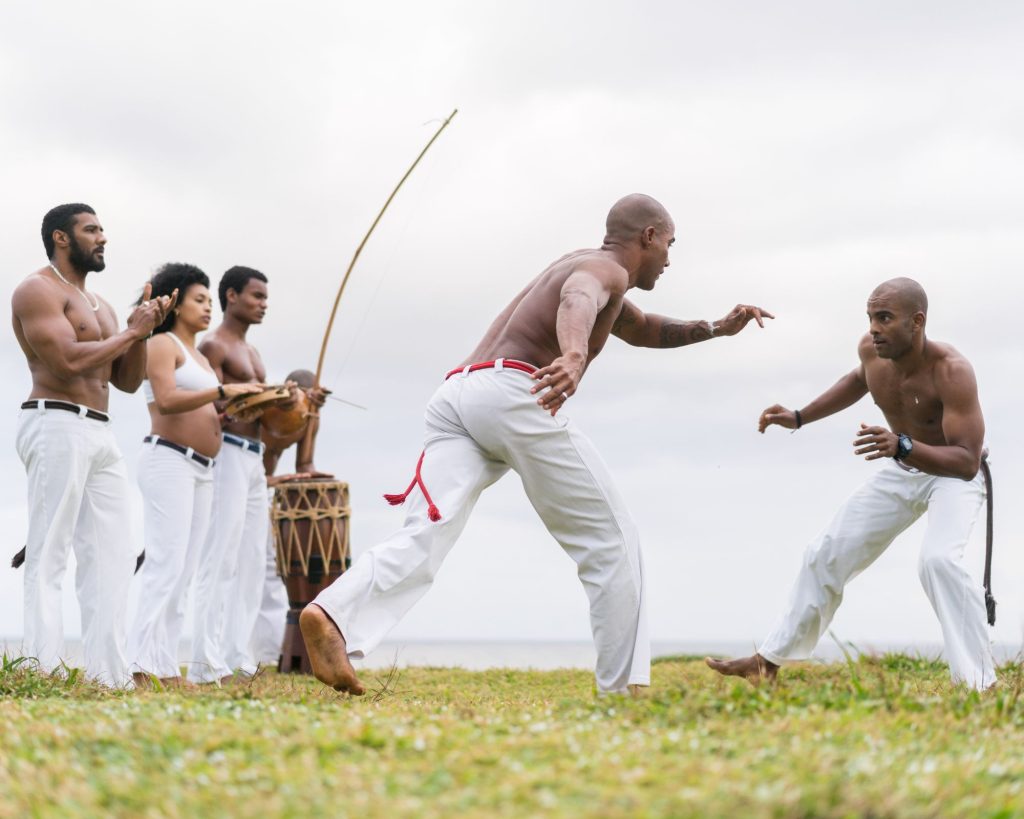
When you begin your capoeira journey, finding the right teacher can make all the difference. A skilled teacher will possess the patience and communication skills needed to break down the movements clearly and guide you through the process at a pace that suits you.
In addition to clear instruction, an excellent capoeira teacher will provide constructive feedback and corrections. This is absolutely crucial for refining your technique and preventing injury. With a knowledgeable and attentive teacher, you can improve your skills rapidly and confidently.
Lastly, a great capoeira teacher will make learning fun and engaging. Whether it's through storytelling, humor, or an infectious enthusiasm for the art, a good teacher will keep you motivated and coming back for more.
The right teacher can make all the difference in your capoeira journey, so take the time to find someone who truly inspires you.
Some Movies With Capoeira

Capoeira's shown up in a quite a fair number of movies over the past few decades! Here's a few you can check out for yourself:
- The Martial Arts Kid (2015)
- Only the Strong (1993)
- City of God (2002)
- The Princess and the Warrior (2000)
- Blindness (2008)
Don't forget to also check out documentaries about Capoeira, such as:
- Songs from the Heart: A Journey into Capoeira (2012)
- We Love Capoeira (2013)
Most Notable Figures In Capoeira
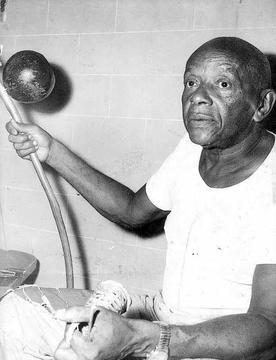
And, just in case you wanted to do some more research, here are some notable figures who practice or have practiced Capoeira:
- Mestre Bimba, credited with spreading Capoeira as a martial art to the wider public
- Saulo Ribeiro, Brazilian jiu-jitsu champion and author of several instructional books on Capoeira
- Gabi Marques, professional mixed martial artist who incorporates Capoeira in her fighting style
- Ricardo "Cobrinha" Charles, multiple-time world champion in Brazilian jiu-jitsu who also trained in Capoeira
- Bamba Susso, Gambian musician and Capoeira master who uses his skills to promote peace and unity in his community
These are just a few examples of the diverse range of individuals who have been drawn to the practice of Capoeira and have used it to enrich their lives and careers.
The Wrap-Up
Capoeira is a unique art form that combines martial arts, dance, and music. As we've just learned here, capoeira is more than just a sport: it's a complete activity that offers multiple benefits for its practitioners. From socialization to stress reduction, capoeira has something to offer for everyone.
In conclusion, capoeira is a complete activity that combines art, music, dance, and martial arts. It has numerous benefits, ranging from socialization to stress reduction, and it's an excellent educational tool.
With its broad appeal and unique offerings, capoeira is an activity worth exploring for anyone seeking to improve their physical and mental wellbeing.
That's about it for Capoeira. Check out another martial art here!
[author-box-jpx-fitness]
